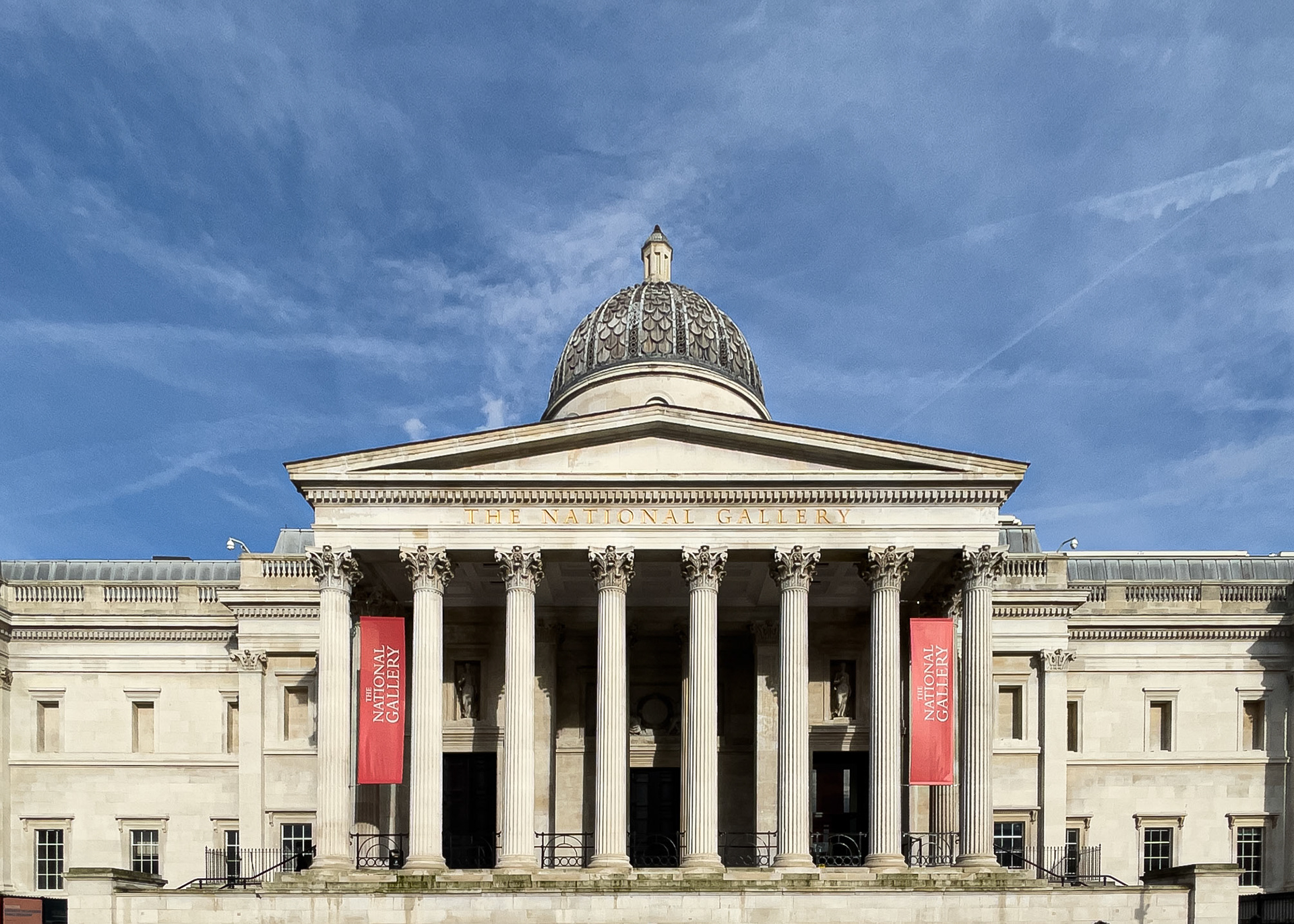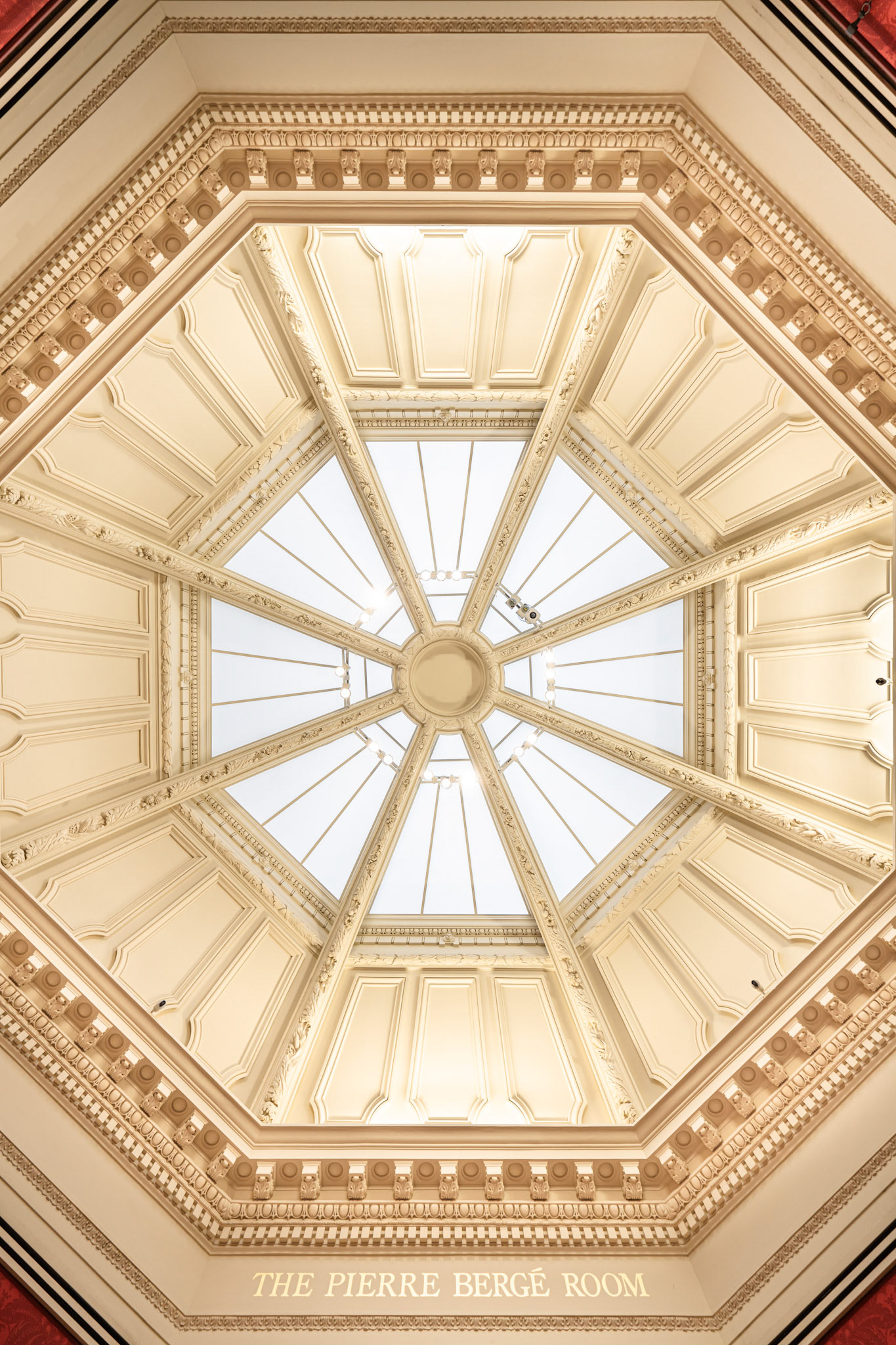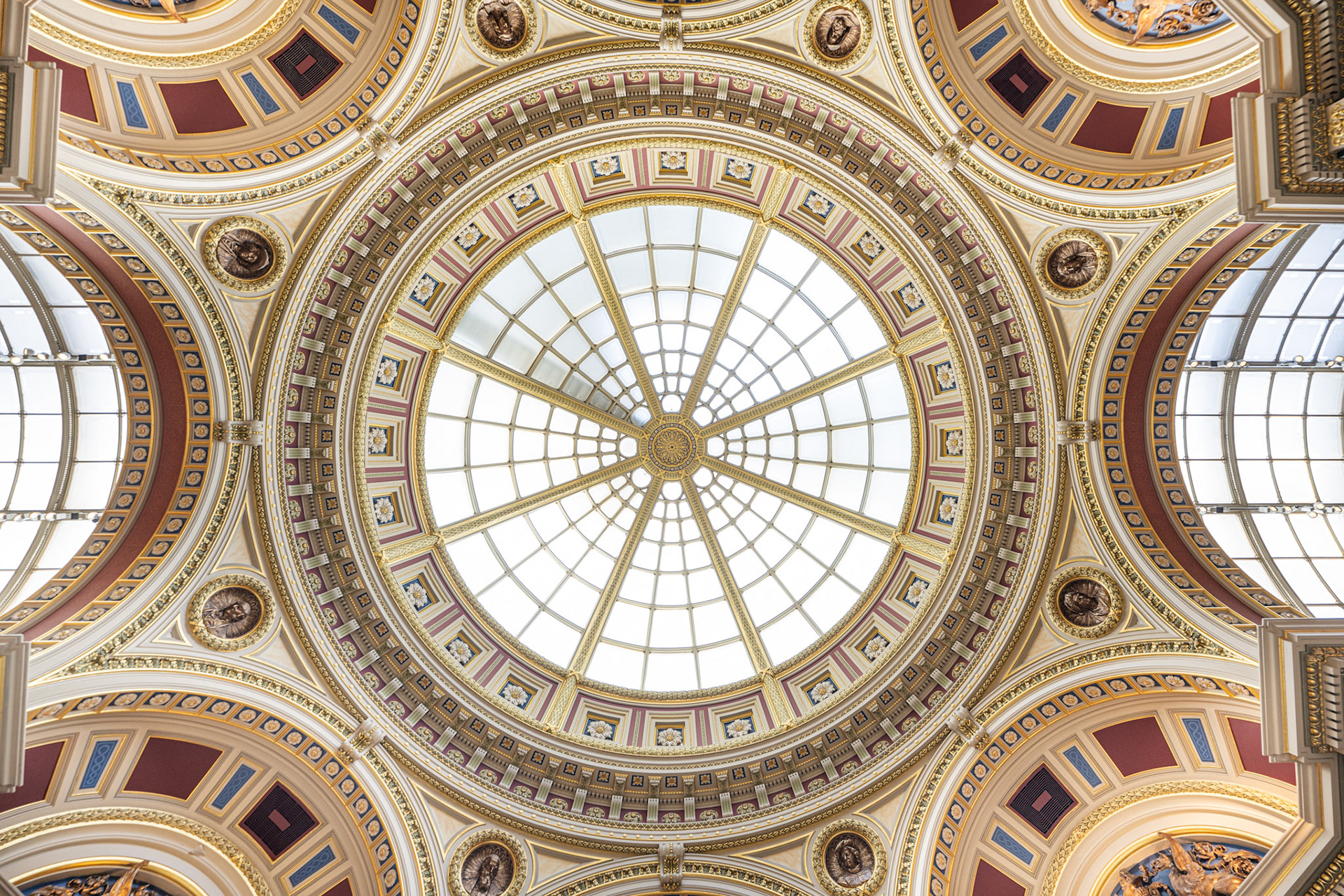The National Gallery in London is located prominently on Trafalgar Square. Established in 1824, it was founded with the aim of making great works of art accessible to the public. It houses an extensive collection includes masterpieces by renowned artists such as Leonardo da Vinci, Vincent van Gogh, Johannes Vermeer, and J.M.W. Turner.
Architecturally, the National Gallery is an impressive neoclassical building designed by William Wilkins, constructed between 1832 and 1838. The grand facade, with its Corinthian columns and portico, provides a stately entrance that reflects the gallery's importance as a national institution.

National Gallery - facade
Several paintings by Rembrandt are displayed in the Gavron Room, including the monumental Portrait of Frederick Rihel on Horseback from 1663. Measuring nearly 3 by 2.4 meters, it is one of the largest paintings ever created by Rembrandt. The Pierre Bergé room is named after the French businessman and art collector who founded the refurbishment of the room in 1998.

Gavron Room with paintings by Rembrandt

ceiling of the Pierre Bergé room
The building was extended between 1872 and 1876 to plans by Edward Middleton Barry. The Barry rooms are laid out in the form of a greek cross with a central octagon.

ceiling of the central octagon of the Barry rooms
The Main Vestibule was designed by John Taylor and constructed between 1884 and 1887. The floor mosaic were created by Russian-born artist Boris Anrep between 1928 and 1952.

Main Vestibule with "The Beheading of Saint John the Baptist" by Pierre-Cécile Puvis de Chavannes

main vestibule ceiling
The Annenberg Court was created as part of the East Wing redevelopment between 2003 and 2005. It features the wall painting "Messengers" by Bridget Riley, created specifically for the National Gallery.

Annenberg Court with "Messengers" by Bridget Riley
You may also like